BICEP Curls: What the recent results mean for inflation, gravitational waves and multiple universes
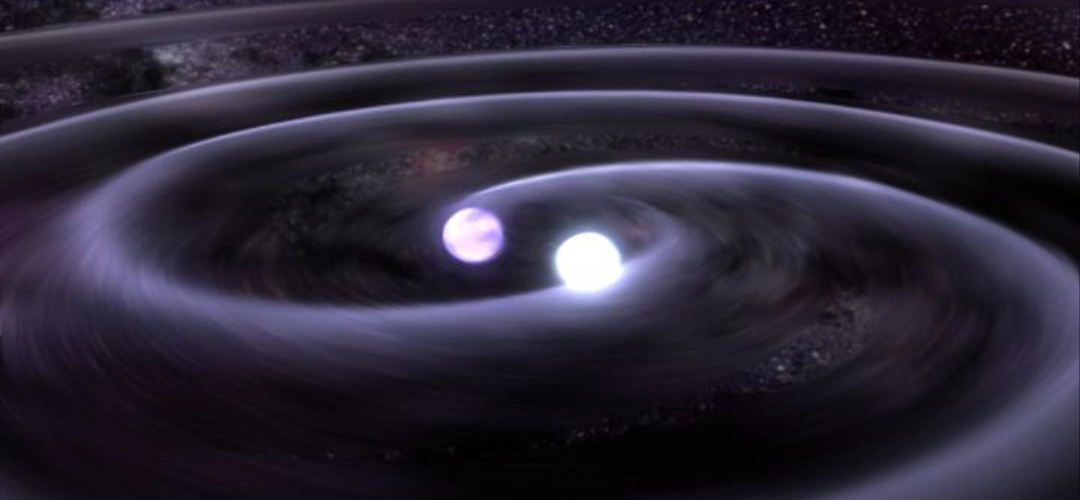
On March 17th 2014, a press conference was called at Harvard University. Rumours flourished briefly, and then an announcement was made to great excitement. The BICEP2 experiment had detected B-mode polarisation in the cosmic microwave background 1.
In response, a very small number of scientists working in a few very specialised areas went “cool!”, and then started bickering about why it was cool. Parts of the astrophysical and particle physics communities got a bit excited. Most other folk went “huh?”, and then got on with their lives. Here I will do my best to explain to you the significance of the results and what they even mean in the first place.
To begin at the beginning, BICEP2 is a telescope at the South Pole. BICEP stands for Background Imaging of Cosmic Extragalactic Polarisation and BICEP2 is the second generation of this telescope. It images background radiation, as opposed to foreground radiation which would come from sources like nearby stars. Cosmic is in space, extragalactic is further away than our galaxy and polarisation is kind of like direction.
To be more specific, light can be either polarised or unpolarised. It might have a vertical polarisation, which would mean that the light waves oscillate up and down; or it might have a horizontal polarisation which would mean that they oscillate right and left. They might have a spiral polarisation or something weirder or even a combination of all of these. E-modes and B-modes are two kinds of polarisation, or ways in which light can curl. It is these kinds of polarisation that we are interested in for this experiment. E-modes can be produced through a variety of mechanisms, but B-modes can only be produced through gravitational waves.
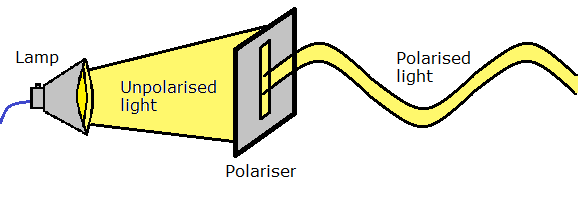
Figure 1. Diagram of polarisation of light. Unpolarised light is made up of waves which oscillate in a random combination of directions. Here unpolarised light is passed through a filter which only allows vertically polarised light to pass through, so that all that’s left is light that oscillates vertically. BICEP2 tried to measure two polarisations of light known as B-modes and E-modes.
Image Credit: Rebecca Douglas
So BICEP2 was imaging light from further away than our galaxy to see what kind of polarisation it has, if any. To get more specific, it was imaging background light that is especially distant. As far away as any light we can measure in our universe. Since light travels at a finite speed, this far-away light is also the oldest light we can measure. It is primordial light, the “first light” and was created 380,000 years after the big bang.
Inflation
The early universe, moments after the Big Bang, was very small and compact. The pressures and temperatures were extraordinary. All the matter in the universe was condensed into a sort of superheated plasma. Electrons and quarks were free to move around in this plasma and were not bound to each other in atoms.
Electrons are really great at deflecting photons (particles of light). So if a photon were to exist in the plasma it wouldn’t be able to go anywhere before it got deflected by an electron. It took a while after the big bang (about 380,000 years) before the universe was big enough, the pressures low enough, and the temperatures cool enough for electrons and protons to join as atoms and hence to get out of the way of the photons, so that light could finally get somewhere. The moment this happened light did precisely that. This is the first light. It still exists today as low energy microwaves and, since all of space came out of that plasma, it can be measured throughout all of space.
These microwaves make up what is known as the cosmic microwave background radiation (CMBR) and were first detected accidentally in 1965 by Arno Penzias and Robert Wilson. They were working at Bell Telephone Laboratories trying to explain a noise source they were measuring with their telescope. At first they thought it was caused by pigeon droppings on the telescope dish and they spent a long time cleaning off the droppings. When the noise was still there they realised they had made a discovery, the cosmic microwave background radiation.
It’s surprisingly uniform (incidentally, if you tune an old analogue TV to an unused channel about 1% of what you see is this radiation). We measure the temperature of the radiation and find it to be 2.7 K (-270 °C) everywhere, but only if your thermometer isn’t very sensitive. Later experiments were designed with better thermometers specifically to measure it. The first of these experiments was COBE (the Cosmic Background Explorer) 2 and the most recent experiment was Planck 3. They found that if you have a better thermometer you can detect small differences in the background, fluctuations and small features, but that these fluctuations are tiny.
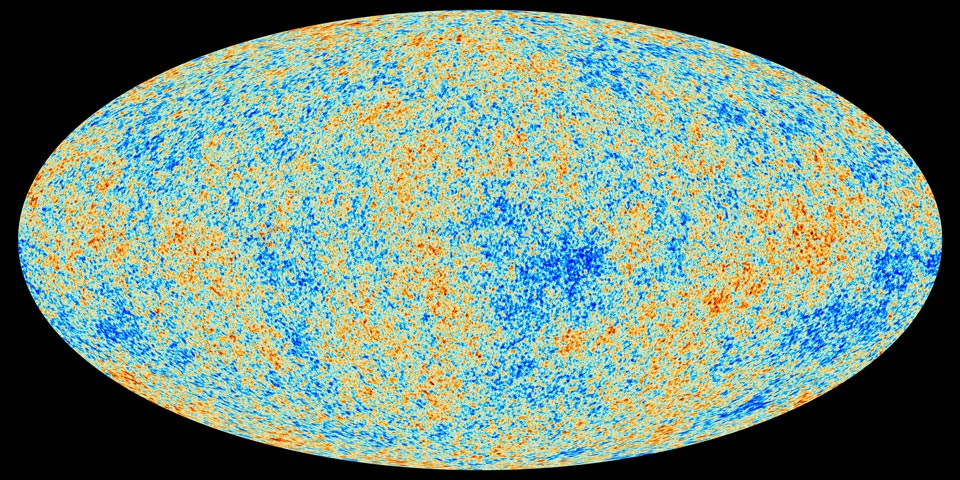
Figure 2. The cosmic microwave background, as measured by Planck. The speckles are tiny fluctuations in temperature Image Credit: NASA
This brings me to cosmic inflation. The fact that the CMBR was relatively uniform was puzzling to cosmologists. It’s a bit surprising to find that if you look as far as you can in one direction, and then as far as you can in precisely the opposite direction you see the same thing. It’s too far for light to have travelled all the way from one end to the other – light isn’t fast enough to do that – so how does space know that it should look the same in both directions?
Inflation is a theory which tried to resolve this by proposing two things. Firstly, the big bang happened and the universe expanded like crazy at first and then slowed down. Secondly, because of that, for a long time everything in the universe was really close together and light travelled from one end of the universe to the other while it did still have time to do so, and that’s why opposite ends of the universe are the same temperature.
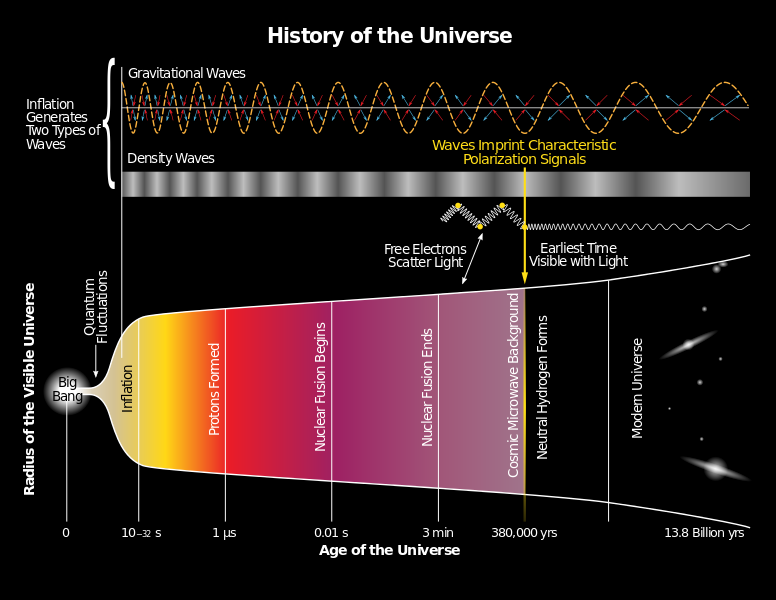
Figure 3. Diagram of inflation. Inflation was a period of very rapid expansion in the early universe. Image Credit: Wikicommons
That seemed like a neat solution. However, at the time there wasn’t a great deal of solid evidence to support the theory. In physics if you have a theory but you don’t have any measurements, then you get a whole bunch of different people coming up with their own versions and their own models. It’s only when you start making measurements that you can refine these, put limits on them and start to rule out certain models and theories. The measurement of B-modes is not only direct evidence of inflation, but restricts the form that inflation could have taken.
Heisenberg’s Uncertainty Principle
What about those fluctuations? The CMBR is uniform on the largest scales but fluctuates on the small scale; the more closely you look or the more accurately you measure it, the more you find small features which are not uniformly distributed. Why should it fluctuate at all if there was time for everything to settle down and get to the same temperature before the universe really started expanding?
To understand this you need to know a bit about the Heisenberg Uncertainty Principle. Werner Heisenberg came up with this one (as opposed to Walter White). You may have heard of it in terms of momentum and position; you can measure an object’s momentum as precisely as you like, but to do this you have to sacrifice your precision on your measurement of its position. The same goes the other way around. There are many other pairs of variable like this, where you can measure one infinitely precisely, so long as you don’t know anything at all about the other. That’s typical of quantum physics.
One of those pairs is energy and time. So you can measure how much energy something has, so long as you don’t know precisely over what time period it will have that energy. This is important for inflation because it means that over extremely short time periods energy need not necessarily be conserved; you can get something out of nothing. The “borrowed” energy needs to be paid back, but not immediately. So you can create a particle and an antiparticle out of the vacuum of space. They will quickly combine and annihilate, but temporarily you had nothing, then something, then nothing again. According to quantum theory, this happens all the time and everywhere in the universe.
Since energy and matter are interchangeable and particles count as matter, we can think of this process as fluctuations in energy. You get a little increase in energy as a particle is created and a little decrease as it annihilates. These tiny fluctuations existed at the moment of inflation and, as a result, they still can be seen now in the fluctuations of the CMBR. Those primordial fluctuations caused the formations of stars and galaxies and galactic clusters and all the structure we have in our universe today.
Funnily enough, it turns out that via a similar mechanism you can also get fluctuations in gravitation. The echos of those fluctuations make up part of what the BICEP2 experiment was able to measure.
Gravitational waves and gravitational lensing
Two gravitational effects were indirectly measured by BICEP: gravitational lensing and gravitational waves. Both are relativistic effects. Here’s how it works:
1. Einstein comes along and says we’ve got gravity all wrong – Newton did well to figure things out to begin with, but there’s more to this than meets the eye. Gravity isn’t just what happens because two heavy things find each other attractive – it’s the shape of space itself.
- He says, “get this, heavy stuff bends space.”* He means that if you’ve got a star, the fabric of space itself bends around that star. Just a little, because space is a pretty stiff fabric, but it bends a measurable amount (although Einstein himself thought the effect would be too small to measure). Other heavy stuff then moves around according to the degree to which space is bent. Some guy called John Archibald Wheeler put it like this, “spacetime tells matter how to move; matter tells spacetime how to curve.” 4**
- It doesn’t just work for matter. It turns out that light itself will also follow the curved path if spacetime has been bent out of shape by a star or other massive object.This is known as gravitational lensing because matter acts like a lens, changing the path of the light.
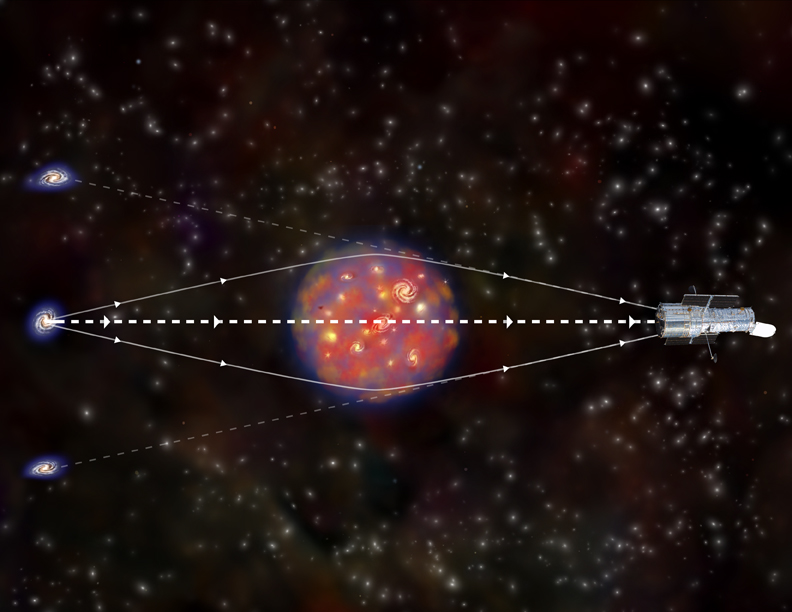
Figure 4. Diagram of gravitational lensing. The massive body between the telescope and the galaxy curves space. Light from the galaxy then follows this curved path, making the galaxy appear to be adjacent to (although still further away than) the massive body. In this way the gravitational curving of spacetime acts as a lens, bending the light. <\br> Image Credit: NASA
Remember those gravitational fluctuations I was talking about? Turns out they were enough to do some lensing and BICEP was sensitive enough to measure how much lensing they did. That’s not all though, it was also sensitive enough to indirectly measure gravitational waves.
Gravitational waves happen when something moves that is heavy enough to bend spacetime. Only asymmetrical motion will work, otherwise the waves cancel out. What happens is that these heavy things that are bending spacetime move around and cause ripples and wobbles which can propagate a little like water waves on the surface of a pond.
These gravitational waves are tiny and elusive. So far no one has measured them directly, but there is evidence for their existence. The first indirect measurement was carried out by Hulse and Taylor 5. They observed a pair of pulsars (pulsars are a kind of star) which were orbiting their common centre of gravity. As they did so they lost energy, leading Hulse and Taylor to conclude that they must be losing energy through gravitational waves, because no other mechanism seemed possible, and because the system was losing energy in precisely the way that was predicted by Einstein.
The second indirect measurement is the B-modes in the CMBR as measured by BICEP2. E-modes were measured as well, but were a much larger effect and so needed to be subtracted away from the data so that the B-modes could be seen at all. Both were expected but the presence of B-modes can only be explained through gravitational waves. These ripples in spacetime must have caused this kind of polarisation.
Multiple universes
Finally, we get to multiple universes. Perhaps you’ve heard the idea that our universe is not necessarily the only one. There could be other universes out there that popped into being just the way that ours did. Of course, they don’t exist in our set of spacetime so most people think it would be impossible for us to detect them or to interact with them, but they could still exist.
This sounds like science fiction, but there are cosmological models which predict that multiple universes can exist. Indeed there are models which say that they must exist. As Professor Marc Kamionkowski said in the press conference on the 17th of March, “You can have inflationary models which don’t imply multiple universes, but most of them do.” He went on to point out that when inflation was first suggested it didn’t make any testable predictions, but now not only do testable predictions exist, they have been tested. Perhaps one day this will be possible for multiple universe theory as well. I’m not holding my breath but it would certainly be impressive.
Conclusion
To properly understand the BICEP2 results you need to first understand a great deal of physics. Really you need to understand electromagnetic theory, quantum theory and the uncertainty principle, relativity, inflationary theory, electroweak and grand unified theories, elements of particle physics and cosmology, statistics, mathematics, telescopes, gravitational waves, gravitational lensing, multiple universe theories, the difference between a theory and a model and all sorts of other things besides. I was at a conference on gravitational waves on the day that this announcement was made. Four days later someone was finally brave enough to say “I think I understand parts of this” and had a go at giving a lecture on it.
However, with that in mind, these measurements are significant and fascinating. They have far-reaching consequences for cosmology, astronomy and particle physics (I haven’t mentioned much about this, but if you’re curious go look up “inflatons”) and they teach us something new about our universe and where we came from. It’s encouraging to have evidence to support inflation and gravitational waves and it is intriguing to hear about multiple universes – even if predictions surrounding them should be made only tentatively and with great care.
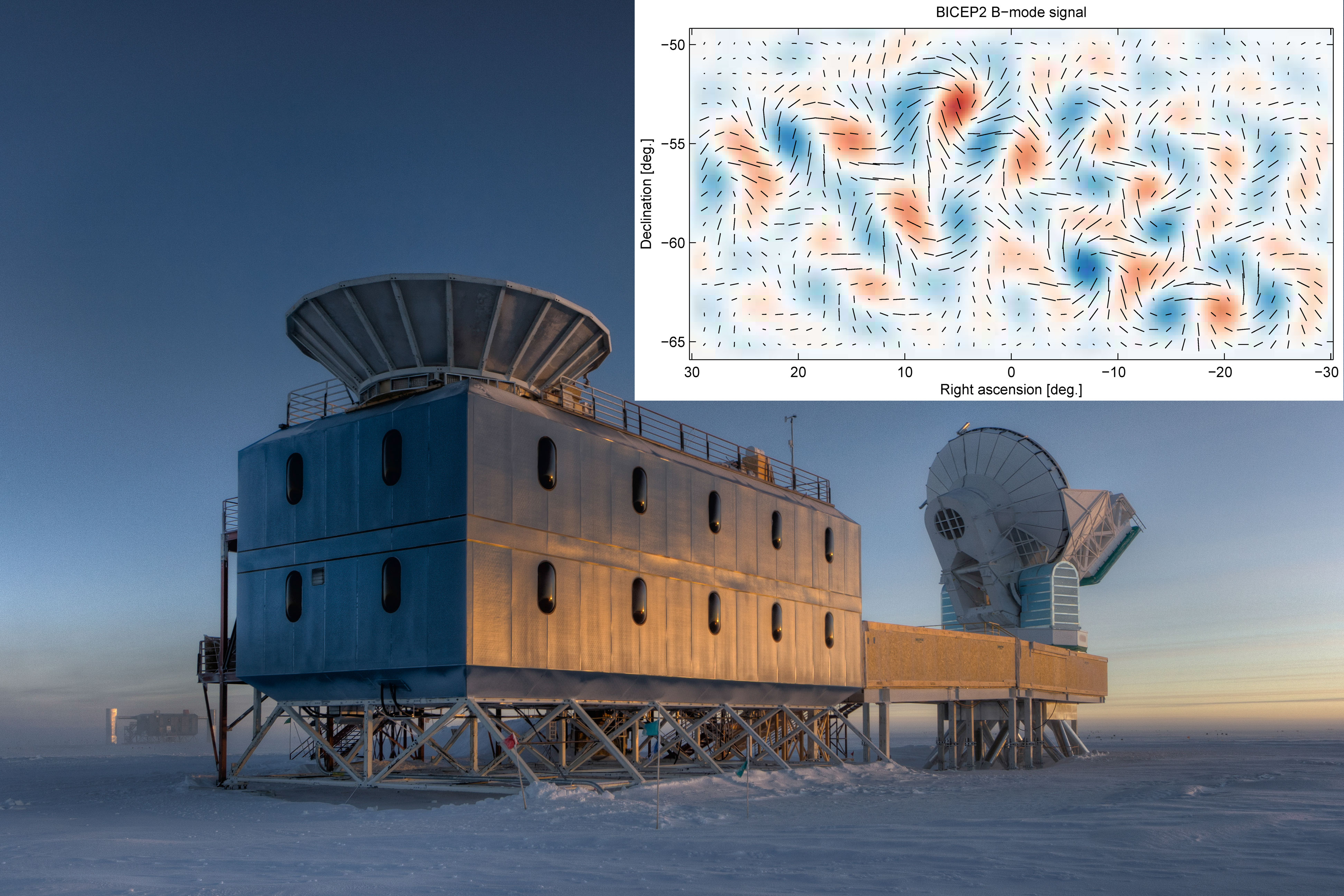
Figure 6: Photograph of the BICEP2 telescope in Antarctica with the measurement of the polarisation of the CMBR inset. The red and blue shading on the graph is an indication of the temperature of the CMBR, whilst the lines indicate the degree of B-mode polarisation measured. The degree of polarisation seems to be greatest at the extremes of temperature (though it should be noted that these extremes are actually only very small fluctuations). Image Credit: NASA
Without wishing to detract from any of that I, should also urge a little caution when looking at and interpreting these results, if only because BICEP2 is the first experiment to have detected these B-modes. Until another experiment can independently verify them, the scientific community should not take the measurements as absolute and indisputable evidence. While to my amateurish and inexperienced eyes the evidence is convincing, it is still entirely possible that there is some systematic error that was overlooked. However, the Planck collaboration is due to release results from a similar experiment in October, at which point many people will be a lot happier to label this as a “discovery.”
Until then we wait with baited breath and look forward to all the interesting ideas that the theorists will be busily producing based on what has already been measured. I feel that the BICEP2 group should also be thanked for releasing all of their data and making it freely available online. It would be nice to see more of this in science in general; by doing so, they have allowed the theorists and everyone else to really get to grips with the implications of what is truly a fascinating discovery.
*Not technically an actual, genuine Einstein quote.
**Actual, genuine John Archibald Wheeler quote.
BICEP Curls: What the recent results mean for inflation, gravitational waves and multiple universes by Rebecca Douglas was specialist edited by Sean Leavey and copy edited by Jessica Bownes
References
- P. A. R. Ade et al, BICEP2 I: Detection of B-mode polarization at degree angular scales, arXiv preprint arXiv:1403.3985 (2014)
- E. L. Wright et al, Interpretation of the COBE FIRAS CMBR spectrum, The Astrophysical Journal. 1994.
- J. M. Lamarre et al. The Planck high frequency instrument, a third generation CMB experiment, and a full submillimeter survey, New Astronomy Reviwews. 2003.
- Kenneth Ford and John Archibald Wheeler, Geons, Blackholes and Quantum Foam: A Life in Physics, W. W. Norton and Company, 1st edn, 2010, p 235
- R.A. Hulse. The discovery of the binary pulsar(PSR 1916 +13). Reviews of Modern Physics, 1994. And also, J.H. Taylor. Binary pulsars and relativistic gravity. Reviews of Modern Physics, 1994










